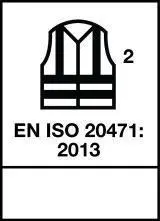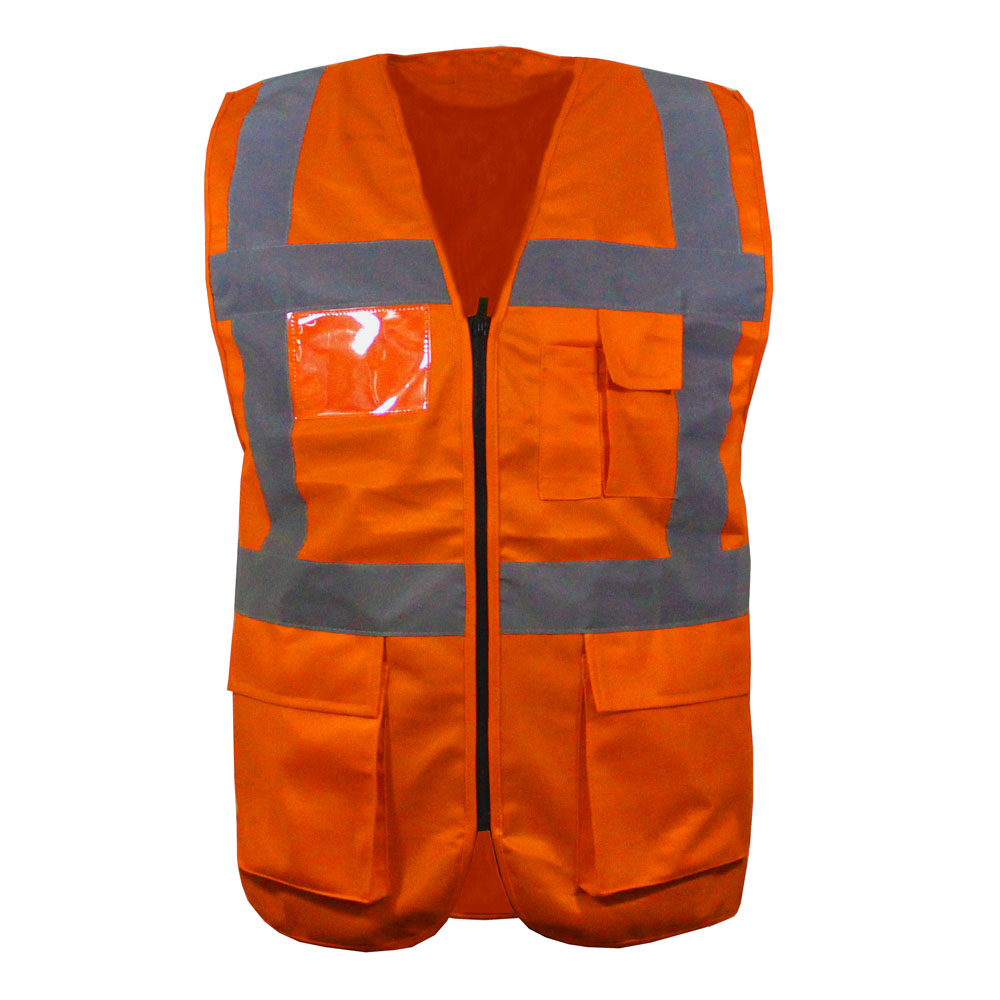In industries where most work occurs near transportation, cranes, or other motor vehicles, Hi vis work clothes are a crucial requirement. This is also essential for employees who work at night or in other conditions with insufficient lighting. The main function of Hi vis clothing is to make the wearer stand out from the background, making them clearly visible from all angles. This reduces the risk of accidents occurring in potentially dangerous situations. Due to the crucial role of Hi vis in worker safety, these clothing items (such as vests, T-shirts, polo shirts, pants, and jackets) must obtain EN ISO 20471 certification.

What is EN ISO 20471 high visibility clothing?
ISO 20471:2013 High Visibility Clothing is an international standard for safety requirements and testing methods for high visibility workwear, suitable for high-risk situations. It sets the requirements for “high visibility clothing that visually indicates the presence of users” and evaluates the suitability and durability of reflective materials.
EN ISO 20471 was released in 2013, replacing EN 471:2003 A1:2007. Due to the validity period of the certificate being only five years, this means that the last batch of clothing that meets EN471 certification is no longer compliant. If you haven’t updated the high visibility clothing for workers recently, it’s likely that your operation does not comply with EN ISO 20471, so it’s time to order replacement parts now. Any new high-strength work clothes produced after 2013 must bear the CE mark and their design must comply with the new standards.
Like EN471, the requirements for background materials, retroreflective materials, and composite performance materials are divided into three categories. There are some important differences that need to be noted, which we will introduce later in this article.
The three components of Hi Vis clothing
1. Fluorescent materials
This can improve visibility during the day and also enhance visibility at night.
2. Reflective strip
These designs are used to improve visibility during darker times of the day. Reflective strips require a light source to function and generate reverse reflection. They are essential for those who work at night.
There are different types of high visibility corner strips, the most common of which is “glass bead reflection”. These require careful maintenance to ensure that clothing remains fitted and fully compliant. This standard stipulates that CE marked and certified clothing should have reflective strips around the legs and sleeves, so this must be considered when selecting high-strength long sleeved clothing, jackets (such as pilot jackets and high-strength woolen sweaters), and high-strength fabrics- Vis work pants.
3. Comparative materials
Some high gloss clothing designs have darker colored parts that are less sensitive to dirt compared to fluorescent materials and reflective strips, otherwise their functionality will be weakened. The areas covered with contrasting colored fabrics are often the easiest places to accumulate dirt – for example, the sleeve ends and abdomen of high-strength wool and jackets, as well as the ankle and knee sections of high-strength work pants and waterproof pants.
This standard divides high-strength clothing into three levels, and all clothing should be labeled with the EN ISO 20471 icon and accompanied by the corresponding level number. You can see an example below:

Certification is based on the surface area of two types of materials, each with a minimum requirement:
| X=Class | Class 1 | Class 2 | Class 3 |
| Fluorescent materials | 0.14m2 | 0.50m2 | 0.80m3 |
| Reflective tape Material | 0.10m2 | 0.13m2 | 0.20m3 |
Hi Vis Class 1 Description: The lowest level of visibility
Items that typically comply with Class 1 include Hi vis pants when worn separately from other Hi vis clothing.
Hi Vis Class 2 Description: Medium visibility
Items that typically meet Class 2 requirements include Hi vis sleeveless vests.
Hi Vis Class 3 Description: The highest level of visibility
The items that usually meet Class 3 requirements are Hi vis jackets and sleeved Hi vis vests.
Level 3 can be achieved in two ways:
1. Wear single piece clothing rated as Level 3
2. Wear jointly certified products and form a level 3 classification based on the total area of fluorescent and reflective materials
You can determine when the product will receive joint certification by viewing the inner label of the joint item.
What is the difference between EN ISO 20471 and EN471?

When EN ISO 20471 replaced EN471 in 2013, multiple improvements were made to the standard. The new standards have made stricter distinctions between different types of risk situations, and hi-vis users can apply them to their own situations to determine the level of protection they need.
It is crucial that the current requirements depend on which part of the body the clothing covers, rather than the type of clothing in EN471. There are five options: torso only; Torso and arms; Legs; Torso and legs; And the trunk, arms, and legs.
Although hi-vis can still be divided into three levels, the requirement for level 3 has been raised. Three types of clothing must now cover the torso, including full length sleeves or pants.
If the sleeve covers a portion of the reflective tape on the torso of the garment, a tape must be added to the sleeve. For high gloss clothing with short sleeves, if the sleeves cover the torso strap with a reflective strip, the current standard stipulates that there must also be a reflective strip around the sleeves.
It is interesting that the requirements for the tensile strength, rupture strength, and tear strength of the fabric have been reduced, while the color fastness has been upgraded to a minimum of 4 levels.
The EN ISO 20471 logo is also an updated version, designed to be clearer, with only one number next to the illustration indicating the grade of the clothing.
www.allflychina.com
ALL FLY TEAM

